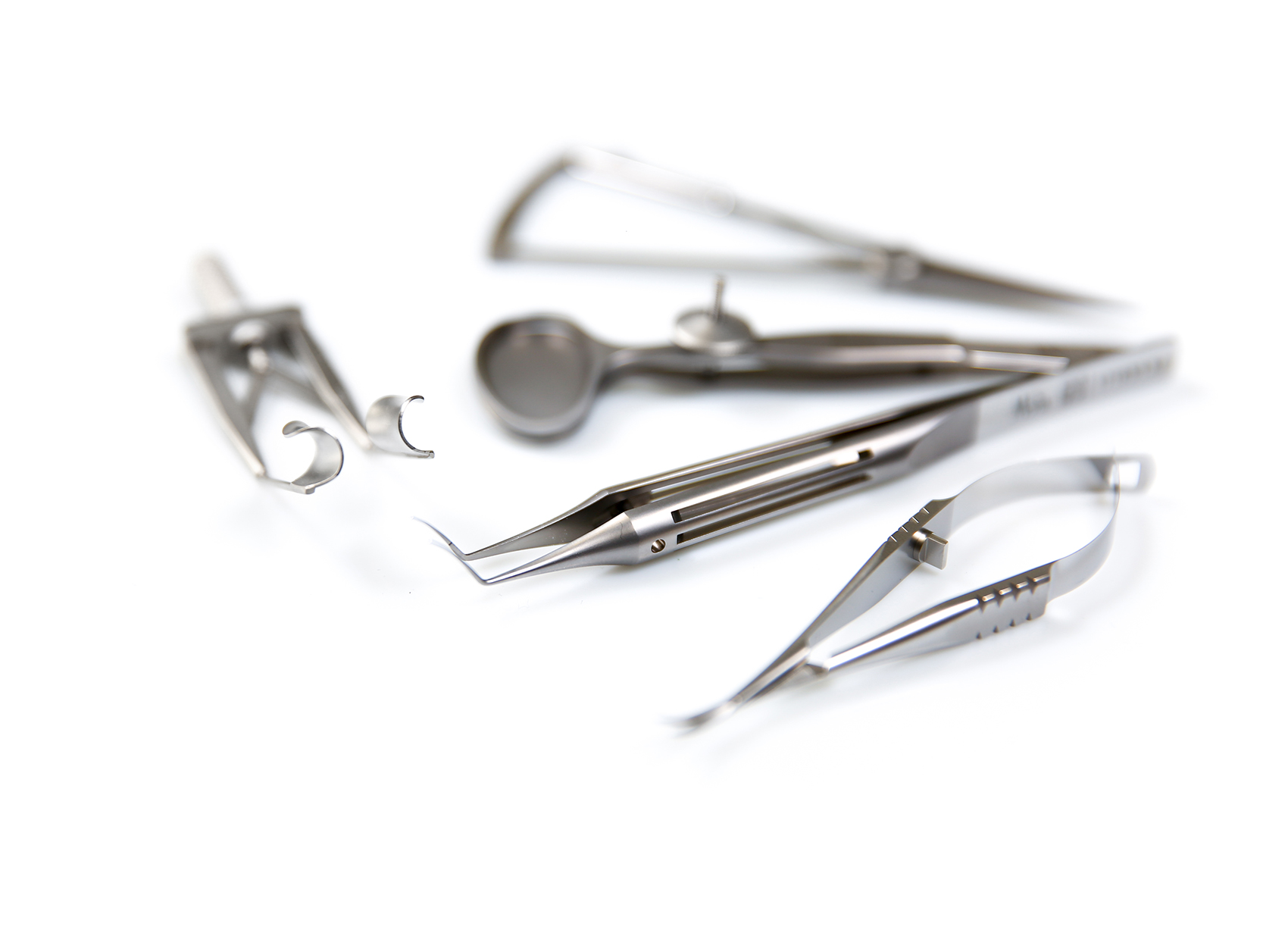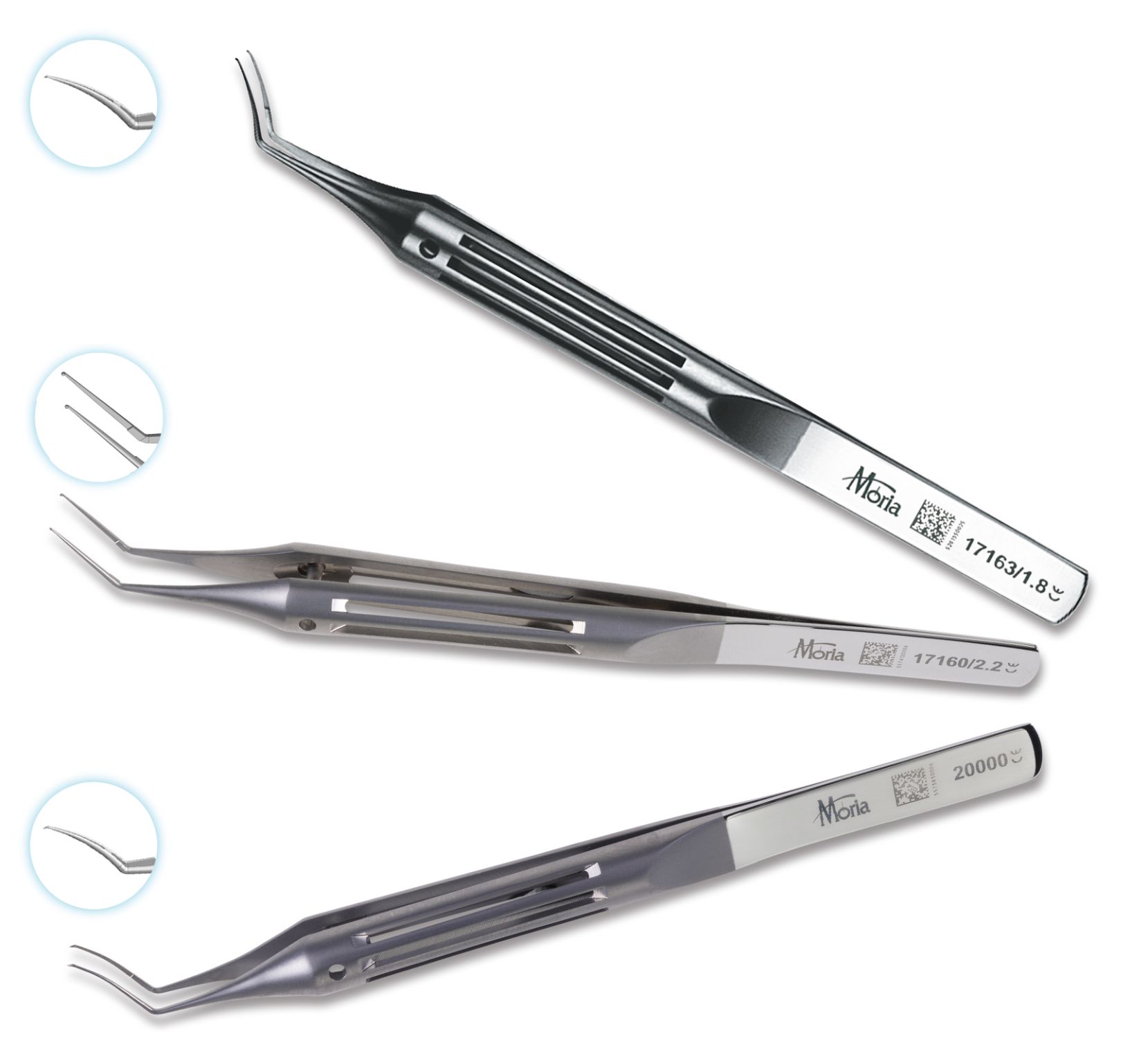
Capsulorhexis: a major step of the cataract surgery
In this article, Moria, a global company that has been manufacturing ophthalmic instruments since 1820, tells you everything you need to know about this procedure.
27/01/2023

In this article, Moria, a global company that has been manufacturing ophthalmic instruments since 1820, tells you everything you need to know about this procedure.
Cataract is a vision disorder that occurs when the crystalline lens loses its transparent color. Cataract surgery is among the most widely performed ophthalmic interventions worldwide.
Cataract is a common result of aging and it happens frequently in the elderly. Cataract is characterized by a clouding and darkening of the eye lens, which alters vision. A strong light and adjusted eyeglass can help patients with a small cataract. If a growing cataract remains untreated, it can lead to a loss of vision[1].
[1] Cataracts: Overview - National Library of Medicine (En ligne) - https://www.ncbi.nlm.nih.gov/books/NBK390302/
Capsulotomy is an eye surgery in which an incision is made into the capsule of the crystalline lens. Today, most cataract interventions preserve the lens capsule. In the most performed types of cataract surgeries, surgeons remove nearly all of the crystalline lens but they keep the crystalline lens capsule as it is retained and used to contain and position the intraocular lens implant (IOL).
Anterior capsulotomy has evolved from a « can-opener » capsulotomy to « continuous curvilinear capsulorhexis » (CCC) that is commonly performed in cataract surgery nowadays[1].
[1] Kierstan Boyd - American Academy of Ophthalmology (En ligne) - https://www.aao.org/eye-health/treatments/what-is-posterior-capsulotomy
Capsulorhexis to remove a cataract
The capsulorhexis is a technique of anterior capsulotomy characterized by a circular and continuous central opening in the anterior capsule. This is a key step in the cataract surgery that allows phacoemulsification of the lens nucleus.
Continuous Curvilinear Capsulorhexis (CCC)
In fact, the term “continuous curvilinear capsulorhexis” has been given to this technique because the created opening does not necessarily have to be perfectly circular. When the use of viscoelastic became more common in cataract surgery, continuous curvilinear capsulorhexis developed into a full-circle tear. This has been made easier with the use of capsulorhexis forceps. Indeed, the precision of circular capsulorhexis offers really good results, giving the ability to the surgeon to practice even the most challenging refractive cataract surgeries.
Capsulorhexis: a surgical technique that preserves the patient’s eyesight
When the technique is done correctly (well-centered, with a correct size and with a 360° overlapping capsular edge), it prevents the patient from developing several eye conditions such as myopic shift, intraocular lens tilt, optic decentration, as well as both posterior and anterior capsular opacification.
The advantages of capsulorhexis
Over the last few years, the continuous curvilinear capsulorhexis (CCC) has been widely used for the surgical approach to the anterior capsule. Indeed, it allows an in-the-bag phacoemulsification and in-the-bag intraocular lens implantation.
The main advantages of continuous curvilinear capsulorhexis is that it decreases the risk of radial tears and vitreous loss in addition to making the capsule stretched. In comparison with this technique, other anterior capsulotomy methods using a radial discontinuity show higher risks of radial tears with potential vitreous loss.
To ensure good results to the patient, this technique must be practiced by a skilled and careful surgeon[1].
[1] Johan Blanckaert - The Perfect Anterior Capsulorhexis
Getting the right shape and right size for optimal optical outcomes - The Ophthalmologist (En ligne) - https://theophthalmologist.com/subspecialties/the-perfect-anterior-capsulorhexis

Before starting the procedure, the surgeon has to make sure that there is enough viscoelastic material in the anterior chamber to best manage the pressure of the vitreous.
The anterior lenticular capsule is flattened through this process, which prevents the vitreous pressure from pushing the lens forward. Indeed, this could cause a radial tear.
Some special instruments are nowadays used during this crucial cataract surgery step such as special guided systems.
Continuous curvilinear capsulorhexis is performed using special ophthalmic tools such as :
The use of these tools depends on the size of the incision made by the surgeon.
The size of the capsulorhexis is important. Surgeons use some tricks to achieve the perfect size such as the following ones :
The success of manual CCC highly depends on the control of the capsule tear direction by the surgeon as the direction of the pulling forces on the capsule flap can result in different tearing directions.

Instruments for capsulorhexis
Capsulorhexis forceps are commonly used during this technique.
Capsulorhexis forceps have angled shafts with delicate grasping tips. Their length is 0.5 mm when closed[1]. : incision size : from 1.8- to 2.2-mm generally.
[1] Jian-Cen Tang,1 Hong-Ping Cui,1 Hao Chu,1 Ji Xu,1 and Bao-Song Liu2 - A new application of capsulorhexis forceps in phacoemulsification: capsulorhexis forceps-assisted prechop technique - PubMed Central - https://www.ncbi.nlm.nih.gov/pmc/articles/PMC5824094/#:~:text=The%20capsulorhexis%20forceps%20and%20phaco,be%20applied%20in%20this%20surgery.
Need for information?
Last update: 22/04/2024
We use cookies to ensure that we give you the best experience on our website and to analyze our traffic. If you click "ACCEPT", you agree the use of cookies. You can change your cookie settings, select "CUSTOMIZE".

New for 2024!
We are pleased to announce that starting January 1st, 2024, Moria France will market Alchimia ranges in France and Belgium.
Explore the Alchimia product lines